[xylophone music]
– Mr. Weix: Let’s give a big welcome to that expert engineer of the elements, the adept authority of the atoms, the intrepid investigator of the isotopes, and the wonder of physics, Professor Clint Sprott. [audience applauding] [air bursts] [quirky organ music]
– Welcome to the Wonders of Physics! Now this is the International Year of the Periodic Table of the Elements. Upon which, all of physics and chemistry is based. But Mr. Weix, what’s this I hear about changing the periodic table?
– Yes, Professor Sprott, our funding agency says there’s just too many elements on the periodic table, too costly to keep them all on there, and we’re gonna have to cut it down. So I’m gonna make a version 2. 0, and I’m sure we can do much better with the table.
– That’s ridiculous! You can’t change the periodic table. The elements are what nature has given us.
And they’re all important. And I’m going to convince you of that.
– Okay.
– Beginning with the first element of hydrogen. With our first visitor, Doctor H. [“We Are The Champions” by Queen]
– Woo, hydrogen, yeah! Let’s go, yeah, woo! [crowd applauding and cheering] Yeah, that’s right! Hydrogen is number one of the elements. Without hydrogen, none of us would be here. In fact, none of any of this would be here. That’s because hydrogen is the building block for all the other elements. Fusion, in stars, can take hydrogen atoms and turn it into all the other elements.
And, as if that’s not enough, hydrogen is also really important for the most exciting part of physics, blowing stuff up. [crowd laughing] So that’s how we’re gonna start today. Now I have here a rocket. And I have here some hydrogen. So hydrogen has a lot of energy that makes it a really good rocket fuel. So we’re gonna fill up our rocket with some hydrogen gas. Give it another second or two so we get a really good explosion, right? Okay, that seems about good. And now I’m gonna light our rocket. I’ll give you a heads-up when you’re gonna want to cover your ears.
– Weix: This is very unexciting.
– Let’s cover our ears, okay?
– All right. [rocket exploding] [audience applauding] Okay. Well, I guess I can be wrong once in my life.
– Okay okay, it’s not all rocket science when it comes to hydrogen. Hydrogen is also two thirds of a really important and really powerful molecule here on Earth. Let’s see if you guys can guess it. I’ll give you some hints. First of all, if you consume too much of this molecule, it can cause excessive sweating. Accidental inhalation of this molecule can kill you. And this molecule is so powerful, that if it falls from the sky, it can even knock down bridges and pick up cars.
Anybody have any ideas? You can yell it out! Yeah exactly! If you guess dihydrogen monoxide, you’re right. But for those of us who are familiar with this molecule, we can just use its nickname, water. Yes, now water is all around us, and without it, we couldn’t survive. But as we know, most of the water around us is usually in a liquid form, right? So it might be hard to believe that water is in fact, made up of two atoms of hydrogen, and one atom of oxygen, both of which normally exist as gases on their own. So, I have a contraption here that will prove in fact, that water is made up of two atoms of hydrogen, and one atom of oxygen. Now this process is called electrolysis. So when I flip this switch, we’re gonna start sending electricity through our colored water here, and it will separate into hydrogen on one side, and oxygen on the other. Now, it’s gonna take a couple minutes. So while that’s doing its thing, I’m going to let somebody else make their case, I’ll come back, but now I’m gonna go into my resting state over here. [audience applauding]
– Okay Professor Sprott, I’m looking at the table on the right-hand column, and it says that those are inert gases.
And inert sounds like they pretty much don’t do anything. Surely we can get rid of those.
– Don’t call me Shirley. [audience chuckling] But Mr. Weix, the inert elements, sometimes called the noble elements, are important precisely because they don’t interact with the other elements. And our next visitor, my good friend, Duke Nobellington will explain. [regal music] [audience applauding]
– [squeaky voice] Ah, Professor Sprott, my good man! Now then now then, what’s all this nonsense I hear about removing my fellow nobility from the periodic table? Outrageous, I say. The noble gases are the most regal of elements, and have many important properties and uses. \
– Duke, what’s wrong with your voice?
– Oh well, to demonstrate some of the interesting properties of the noble gases, I just took a big breath from this balloon here, which is full of helium, the second lightest element and the first of the noble gases. Now kids, I wanna say, please don’t try this at home.
The balloons you get at the store can have helium with all kinds of harmful contaminants in it. This is ultra pure research-grade helium, so I know there’s nothing else in here. And because it’s helium, I know it’s inert. It won’t interact with anything in my body, and won’t poison me when I breathe it in. But why did it make my voice sound so funny? Well, helium is much less dense than air, that’s why the balloon wants to float up when I hold it. As a result, the speed of sound in helium is quite a bit faster than it is in the air, about two times as fast. So that shifts the resonance frequency of my vocal track, and causes my voice to sound higher. Now I’ve got a question for all of you. I have a second balloon here, that’s filled with another gas, sulfur hexaflouride. As you can see, this balloon wants to fall down.
The gas inside of here is much denser than air. So my question to you is, if I breathe from this balloon, what do you think will happen? How many of you think it’ll make my voice higher? [kids shouting] Not many. How many of you think it’ll make it lower? And how many of you think it’ll have no effect at all? Okay, well the great thing about physics is, we can do the experiment and find out. So let’s do the experiment. [deep voice] Hmm, that’s odd. [audience laughing] No effect at all. It must’ve been the wrong balloon. [audience laughing] But if it had been sulfur hexaflouride, it would’ve made my voice sound much deeper. In fact, just to be safe, I’m gonna take a bow and expel whatever’s in my lungs. [organ note sounds] Of course, because helium is less dense than air, we use it to make things float.
Like balloons, and also blimps.
– Dr. H: Yeah, but you could use hydrogen too. It’s also lighter than air.
– That’s very true Dr. H, and you know people have tried that before, and it hasn’t always gone that well. [audience laughing] That’s because hydrogen is quite a bit more reactive than helium, as you’ve already shown us. In fact, you know what? Why don’t we give it a try right now?
– Let’s do it!
– Okay, so I’ve got two party balloons here. This one on my left is filled with helium. That one on my right is filled with hydrogen.
Let’s see what happens when we try to light them on fire. [audience laughing]
– Why not? [audience murmuring] Okay, helium first, let’s give him the countdown. Ready, three, two, one. [balloon popping]
– All right, we got a pop, but not much of a bang. That was just the rubber giving way under the heat of the match. Let’s try it with your balloon.
– Yeah, I’ll show you what a real explosion looks like.
– Yeah, I hope you’re not too fond of your eyebrows.
– Hmm, okay, you guys might actually want to cover your ears for this one. Okay.
And let’s count down, ready? Three, two, one. [balloon exploding] [kid screaming] [audience applauding and laughing]
– Okay okay, so now you tell me, which of those would you rather have at your next birthday party? Actually, no no no, don’t answer it. Don’t answer that question. [audience murmuring] Helium also a lot of other important uses. We use it to cool things down to very low temperatures. We can use liquid helium to cool things down to just a few degrees above absolute zero. Or minus 450 degrees Fahrenheit. Which makes even Madison in the polar vortex sound pretty warm. And that’s really important for things like medical imaging and also physics research.
– Okay, so maybe we can keep helium, but what about the other noble gases? You know, I’ve heard really bad things about radon.
– Yeah, all right, okay, you sort of got me there. Radon is sort of the black sheep of the noble gas family, and it does live down in the basement. But even radioactive elements like radon are important. Here, I’ll show you. Over here, I have what’s called a cloud chamber. You can see it up on the two screens, on either side of me. Now, a cloud chamber uses super-saturated alcohol vapor to let us see the trails from single atomic scale particles. Each of those little wisps that you see there is actually the track made from an alpha particle, which is really just a fancy word for a helium nucleus. This pin here is smeared with thorium, which is radioactive, and it’s an alpha particle source, so it’s decaying and emitting individual alpha particles. So each of those wisps that you see is actually a single atom that you’re seeing in real time, which I think is pretty amazing.
[organ playing] [audience applauding] Now, it turns out that all of the helium we have on Earth actually comes from radioactive decay of elements, of radioactive elements like radon and thorium. And in fact, as we’ll hear about later in the show, radioactive elements are also really important for medical imaging. So Mr. Weix, I hope I’ve convinced you that all of the noble gases are far too important to de-throne. And now if you’ll excuse me, I’m due to have tea with the Earl of the Alkalis. Thank you. [audience applauding]
– All right fine, Professor Sprott, we’ll keep the rest of the noble elements then. Noble gases. But you know, what about carbon? If we give carbon the boot, global warming will be gone.
– Peter, you’re not thinking this through.
If it weren’t for carbon, none of us would be here.
– You got that right. Carbon is so important in fact, that he couldn’t be here today. Something about being critical to all life on Earth or something like that. I don’t know. But he said that I could make his case for him. That’s because hydrogen and carbon hang out a lot. They even have a couple’s name, hydrocarbon. Now, they’re no Brangelina, but when hydrogen and carbon get together, things can get really fired up. Let me explain.
Organic molecules, or the molecules that are made up of carbon and hydrogen and some other stuff, are the building blocks for all life here on Earth. So you’re made of carbon and hydrogen. Your dog is made of carbon and hydrogen. Trees are made of carbon and hydrogen, and say, things that come from trees, like the paper I have here, are also made of carbon and hydrogen. When things that are made of carbon and hydrogen are given a spark of energy, they catch fire. Like that. [audience applauding] Yeah, there we go!
– Hello everyone, so sorry I’m late. It’s the carbon dating lifestyle. It’s really demanding, let me tell you.
– Look who showed up, it’s Dr. Carbide. Oh, there we go. [audience applauding]
– Well, hello there, Dr. H. Oh, you have a fire.
– Making fire.
– That’s cool. A really nice fire she has going on here. But, I think I can turn it up a notch.
– Okay, do it.
– Would everyone like to see me try? [audience applauding] All right, well don’t worry. I’m gonna share the tricks of my trade. So because fire takes air to survive, if I rotate the air, I can rotate the fire. That’s called a fire tornado. But how can I rotate the air? [kids exclaiming] Yeah, a screen, right? So if I use this screen, I can spin it, and as the air moves in from the sides, it’s forced to spin too. When the fire consumes the spinning air, it’ll rotate. Shall we try?
– Kids: Yeah!
– All right, let’s try. [playful piano music] [audience gasping] Yeah. [organ playing] [audience applauding] Okay, well, air is not the only gas we have to deal with. Other gases can show different properties than air.
For example, carbon dioxide might be a gas you’ve heard of. That’s when I choose to hang out with two of my oxygen buddies. Now don’t get me wrong. Carbon dioxide is in no way a replacement for the air, but it has some interesting properties, so let’s check it out. Oh wow, I have some candles here. Do we have any birthdays today? This month? Yeah, all right. Okay, how about this year? Do we have any birthdays this year? [audience laughing] All right! Let’s celebrate all the birthdays this year. So I’m gonna light the candles. And you should all think of birthday wishes. And we’ll blow the candles out, but not in a traditional sense.
Oh no no no! I’m Dr. Carbide, I gotta spice things up. All right, all right, we’ve got them all lit. Does everyone have their birthday wishes ready? Great, now remember, don’t say them out loud, ’cause you know what happens when you say them out loud. All right, let’s have some birthday music. [“Happy Birthday to You” by Mildred and Patty Hill] All right, everyone has their wishes ready? Let’s try to get them all in one. [organ plays] [audience applauding] That’s how physicists blow out our candles. Now that reminds me, for those of you who did make the birthday wishes, we got them all out in the first try, which means your birthday wishes are more likely than not, gonna come true. So good job everyone. Okay, well, what happened? Why did the flames go out? It turns out that what I had in this container, was carbon dioxide.
Carbon dioxide is heavier than air. So when I tilted the container over, the carbon dioxide flowed out. it got to the bottom of the trough, it flowed down the trough, pushing the air out of the way. [organ playing] All right, well Mr. Weix, I hope you can finally see that carbon, oxygen, and hydrogen definitely deserve a place on the periodic table. And in no means, way, shape, or form, shall we be taken off of it. All right, Dr. H. I’m pretty sure we made our case here. But there’s some folks in northern Wisconsin that are freezing right now.
They need our help to keep warm. Shall we go help them out?
– Let’s do it.
– Let’s go help them out, bye everyone! [organ playing] [audience applauding]
– All right, we’ll use my slide rule here, and do a quick calculation. Divide by pi. Aha, this might just be a wild gas, but I think we can take nitrogen off the list. You know, we already have two other elements that end in “gen,” and surely, we don’t need a third.
– My name’s not Shirley, but Peter, I’m aghast at that thought. In fact, without nitrogen, it would be the end of the world. And to demonstrate the N listed, Professor Air N. Bar, who’s well-known for his own gaseous emissions.
[bike horn honking] [audience applauding]
– Oh, Professor Sprott made it look so easy. Some other clown got carried away. All I did was ask him to just get the oxygen out of my tires. Well, the good news? They’re only flat on the bottom.
– Well, you know, you could use some of the gases that they’ve been talking about, like hydrogen, helium, or even oxygen.
– Pete, think about it! Hydrogen, as we saw, can be explosive. Helium is super rare. And don’t get me started with oxygen. You know, the atmosphere is about 80% nitrogen, and that’s a good thing. Nitrogen just doesn’t react the same way as oxygen does, and that’s really important.
My friends, we have here a device we call the ping-pong ball bazooka. Oooh! Our task, this brass block. We want to tip it over. But, if you weren’t listening, all we have is the eensie-weensie ping-pong ball. Hee hee, you may laugh, but the N is nigh. Because we have already sealed off with tape, both ends of the tube, so that when I turn on this vacuum pump here, [slurping sound] it pulls all of the air out of the tube, leaving a vacuum. That means that there’s still one atmosphere of pressure, or my namesake, one bar of pressure on the outside, and almost none on the inside. I think we’re already there, so I’ll close this valve and turn this off. This could be a little bit loud, so you may wanna cover your ears. And I could use a little help with a countdown starting at three, two, one.
[valve exploding] [audience gasping and applauding] Whoa! Apparently, Professor Sprott missed the weather report for snow. Just not ping-pong ball flakes. Oh, that was fun! You know, nitrogen can be put to use in other ways. By the way, did anyone hear about my pets? Not my dogs. Or even Schrdinger’s cat. Nice kitty! I hope it’s still alive, but it could be dead.
– Kids: Open it!
– But not those kind of pets. P-E-T, the medical physics. Positron emission tomography. A radioactive isotope of nitrogen, N-13, is used in medical PET scanners.
And the way it works is it decays by emitting a subatomic particle, called a positron. Of that, I’m positive. And it has a half-life of about ten minutes or so. Unfortunately, to make it, we need a cyclotron, and sadly, the closest one is across the street. But I can show you what half-life means, using another radioactive isotope, Barium-137, which has a half-life of about three minutes. Drip drip drip drip drip drip! I think I’ve gotten it all out. And now transfer it to the stage, and push it in front of the detector, and you can see that it’s going up up up up up up, about five, between 4 or 5,000 counts a second, to begin with. Now, watch what happens with time. Every four seconds, a new data point will appear on the screen. Now look, four more seconds.
There, then another one, four more seconds. Now, is the number of decays increasing with time, or decreasing with time?
– Kids: Increasing!
– I think I heard decreasing. The curve is going down. That’s decreasing number. But good guess. Nitrogen in the room does other things. It’s a gas, it’s a molecular gas, and it’s moving all the time, back and forth, back and forth. And it collides with each other. It also collides with very small particles in the atmosphere, be they dust, or pollen, or smoke. That back and forth motion was discovered by a botanist by the name of Robert Brown.
It’s called Brownian motion. It’s this very fine motion back and forth. Now, if Steve has prepared some smoke, we can see it in this special microscope stage and the camera. Let’s check to see. Oh, plenty of smoke. I thought you were gonna quit.
– It’s incense.
– Oh okay, that’s okay. So you can see the smoke here. I will close off the glass beaker and blow into the tube, transferring the smoke into the microscope chamber.
I have to turn on the laser light, so you can see the smoke particles, because they will scatter the laser light and look green in the microscope’s field of view. So now I have to blow in and transfer the smoke. Let’s see, you see that? The speckling, the back and forth? That’s the Brownian motion to move particles around in the atmosphere. [organ playing] [audience applauding] You know, nitrogen also has a very, very useful boiling temperature. A cool minus 196 Celsius. But if you don’t like that scale, you can also say it boils at minus 320 degrees Fahrenheit. And at that temperature, liquid nitrogen is very important for keeping things in cold or cryogenic long-term storage. But it’s boiling. And when nitrogen boils, or almost anything boils, it goes from its liquid phase to its gas phase and expands 750 times, give or take, when it does so. I think I can take advantage of that behavior.
Imagine me, a lowly jester. Actually, now I’m a knight in shining armor. It could happen, you know. And I have a cannon, just like this one here. [wheels scraping] But I don’t need gunpowder. I have boiling liquid nitrogen. Right here. And I want to show you, it’s boiling. Now we will pour it into the barrel. Ooh! Bump bump badoo! This is gonna be fun.
[humming] All right, get my aggressions out. Here’s my projectile. A rubber stopper. Let’s put her in. [hammer banging]
– Fire when ready, Gridley!
– No problem. Nitrogen in the hole! [cannon firing] Oh hey! [audience applauding] Well, Mr. Weix, surely you can see to it that nitrogen stays in the periodic table. As for me, I’ve got to go. I’m outta gas! [audience laughing and applauding] [horn honking]
– Well, Professor Sprott, maybe nitrogen should stay, but surely there must be something we can cut. You know, I hear that silicon is nearly worthless.
– Not at all, Mr. Weix. In fact, silicon is the basis for all of our modern electronics gadgets. And if you don’t believe that, our next visitor will hopefully convince you. Please welcome Dr. Sandy Glass! [sprightly music] [audience applauding]
– Indeed, Professor Sprott! Silicon is very important for its electrical properties, due to its nature as a semiconductor, as my outfit attests. Unfortunately, I will never get to be a full conductor. I can’t keep the beat. [cymbal crashing] Now unlike the other elements we’ve talked about today, we encounter silicon as a solid, not as a liquid or a gas. It makes up over a quarter of the Earth’s crust, usually in the form of silicate minerals.
And these minerals can get ground down to sand. And sand can be very useful in a physics demonstration. So here I’ve got a plate sitting on top of a speaker, with sand on top of it. I’m going to turn on, possibly some annoying sounds, and we’ll see patterns emerge in the sand. [speaker whistling] [speaker whistling higher] [organ playing] [audience applauding] Now the sand landed where the plate doesn’t vibrate, in locations we call nodes. Silicon is also quite light, and we’re gonna use that property in our next demonstration. It’s one of the ingredients in dry eraser ink. Dry erase marker ink. I’m just gonna draw on this plate a couple of fish. And some bubbles.
I’m not a musician or an artist. Now, can I get a volunteer who’s gonna be tall enough to stand here and reach over to come down? Let’s see. In red right there, can you come on down? So in this ink, we have silicon, some other chemicals, and some alcohol. We’re waiting for that alcohol to evaporate, for our ink to dry. As my volunteer makes her way down, you can stand right up in front, and you’ll get to watch what happens live, while everybody else has to watch on the screen. Then I’ll have you do something at the very end. We’re just gonna pour some warm water onto our plate.
– Weix: Is that just regular water?
– Dr. Glass: Yep, just regular water. And as we watch, the bubbles are moving.
And soon, our fish will be floating too. That silicon ink is lighter than the water, less dense, and can float on top. [audience murmuring]
– Kid: Fishies! [organ plays]
– Dr. Glass: It’s swimming around. [audience applauding] Now what’s your name?
– Kid: Ruby.
– Hi, Ruby. If you’d like, you can reach your hand over, put kind of the backside down, and you can actually transfer one of the fish, kinda like a temporary tattoo, to the back of your hand if you’d like. That’s good, just very quick touching it. [organ playing] Good job, excellent! Thank you so much. [audience applauding] Now people quickly realized they could melt down that sand, and make glass.
Glass has been very useful throughout human history. We can make magnifying glasses with it. [audience laughing] And that same lens, when held further away, is like the converging lens of a telescope. And now, I look upside-down. [organ playing] [audience applauding] There’s other useful things we can do with glass too. We can stretch it into very long fibers, that we call fiber optics. And they allow us to send laser light signals over long distances. In fact, this allows Internet signals to cross the ocean. Here’s a simple laser pointer. Here’s a fiber-optic cable.
You can see the light exiting at the end. Now this works because the glass totally internally reflects that light, only letting it out the end, not the sides. As you can see better. . . [audience murmuring] . . . with this set-up. [organ playing] [audience applauding] Now glass is very useful, because it transmits most wavelengths.
Which is why it makes a good window for us to see out of. Now this is an infrared camera. It looks at the wavelengths that correspond to the temperatures of our own bodies. So let’s see what our audience looks like in the infrared. Fantastic! Ah, you guys are picture-perfect. Now if I put this pane of glass in front of my camera though, I won’t be able to see you anymore. Instead, the glass acts as a mirror in the infrared, and we see me. [organ playing] [audience applauding]
– Weix: But Dr. Glass, we already have modern-day plastics that do the same thing.
– That might be true, but we haven’t talked about the electrical properties of silicon yet.
I have here an array of solar panels, and they’re attached to a motor. Now sitting here, just in these fluorescent lights, they’re not doing anything. They’re not able to take these lights, and turn it into electricity. But if I turn on this bright lamp that can mimic the sun, now our motor turns. We’ve turned this light into electricity, and that is mighty useful. [organ playing] [audience applauding] Now, silicon may be abrasive. It is in sandpaper and some toothpastes, but it’s got a softer side too. It’s in silicon caulk and lubricants. It even puts the “silly” in Silly Putty. Without silicon, we wouldn’t have computers, cell phones, or video games.
And that would be a bummer. [computer beeping and whirring] [audience applauding]
– Well Professor Sprott, I think we can get rid of some of the common metals like copper, zinc, nickel. I’ll pick one, copper! Many of its properties are not that useful, and are also duplicated by other elements.
– Not at all, Mr. Weix. In fact, copper is very important, not only in physics, but also in the arts. If you mix copper with tin, you get bronze, like this bronze statue of a badger outside the governor’s office. Or if you mix copper with zinc, you get brass, like this statue of the Fonz from the Happy Days TV show. So we have with us today, that famous metallurgist, Professor T. L.
Copper, who works on the minds of young students, or maybe he just works in the mines. [“Working in the Coal Mine” by Lee Dorsey] [audience applauding]
– Thank you, Professor Sprott! I think. Maybe you should just mind your own business. [audience chuckling] So yes, I am T. L. Copper. T-L-C are my initials, Tender Loving Copper, and I’m here to talk about the wonderful and unique properties of that namesake metal of mine, copper. Did you know, first of all, that the atoms of copper have mass? But only the Catholic ones. [cymbal crashing] [audience laughing] Okay, all right, I was gonna tell you some more jokes and puns about copper, but I can C-U don’t appreciate them. [crickets chirping] So let’s start by talking about some of the properties of copper.
One of the properties of copper is it’s one of the better conductors of electricity. That means each copper atom can take its electron, and move it readily from atom to atom. We call that electricity, or electrical current. And copper is one of the better materials that does that. Now one of the principles of physics is called Faraday’s law. And it says that if you take a magnet and move it by a good conductor, and I have a bar magnet here, similar to what you were looking at earlier, and you move it by a good conductor, and here I have a coil of copper wire. You will create an electrical current. So I take this bar magnet, and I simply put it in the coil of wire, and we can see the current here on this galvanometer. It’s just a device that measures current, and shows you current. If I pull it out, I get a current in the opposite direction.
So I can go in and out, in and out, and I get a current. In fact, I get an alternating current here. What I’ve created is a human generator, or a human alternator. It’s what I’ve done by doing this. And you notice that if I keep the magnet in the coil, I get nothing. It has to moved past the conductor, for it to create a current. I can also show that with this device here. This is a larger magnet. It’s a hockey puck, it’s neodymium, okay? And if I take this stronger magnet, and this is a coiled copper wire, it’s plastic coated. If I take this stronger magnet and pass it by this coil, I will create a current also.
But this time, it’s not connected to a galvanometer; instead, it’s connected to an old-time flashbulb from an old-time camera. So in just a moment, I’m gonna do this. This is going to be fairly bright. So I’m gonna put a shield over the top of it, and I urge you to look kinda off to the side here a little bit, versus right at it. So I need a countdown. Three, two, one. [bulb exploding] [organ playing] As you can see, I created enough current for the current to go inside the bulb, excite the gases inside, and blow up the flash. Now another property, another property of copper is, it’s a very good heat conductor. It can move heat from one point to another, very readily, and I can show that with this gadget over here. Here I have a burner, and I’ll start it up.
This burner is right underneath a rod. On this side, I have a copper rod. On this side, I have a steel or iron rod. And the burner is just simply going to create heat into the center. That heat is gonna be transferred out the rod. Each rod has six marbles on it. And they’re held in place, the marbles are held in place with beeswax, which has a tendency to melt when it gets hot. Now this will take two or three minutes to happen, so keep an eye on this as I go forward, and then we’ll come back to it in a couple, three minutes. All right, I now need a young volunteer to help me in a copper race. You right there, come on down here.
All right, can you stand over here and your name is?
– Neveah.
– Neveah? Okay Neveah, thank you for coming down. Neveah, would you take that ball? Do you like my hat, Neveah?
– Yeah.
– Yeah, just remember, you too can be a physics professor someday, and wear a hat like this. [audience laughing] I can tell that impressed you. Okay, here’s what we’re gonna do. Will you look down that copper tube please? Anything in there? Okay, will you look down this copper tube? Is there anything in there? Okay, they’re both hollow. Okay Neveah, will you stand over there again? Here’s what we’re gonna do. You’re gonna take your ball, and I’m gonna take this steel ball, and at the count of one, two, three, go, we’re gonna drop our ball down through the tube. And we’re gonna have a race.
You’re gonna try to catch it, and put your hand down here like this. And I’ll put my hand down here, and we’ll see who wins the race. Okay, simple? Okay, on go! One, two, three, go!
– Whoa, Neveah! Way to give me five! All right! [audience applauding] She really beat me, didn’t she? Okay, let me have the ball back. Here, let me give you my namesake. Here’s a copper for you for helping me out. Let’s give her a hand here, okay? [audience applauding] Thank you, you can go back! As you can see, I’ve lost some of my marbles already. Okay? [audience laughing] All right, so how was Neveah able to beat me so badly? Is the gravity different over here versus here? No. Both tubes are identical. Here’s what happened. Her ball was simply a steel ball.
My ball, on the other hand, was a magnetic ball. And as that magnetic ball fell through the copper, according to Faraday’s law, it created a current in the copper. There’s a second law of physics called Lenz’s law, that says that once you create a current in the copper, it creates an opposite magnet to the first one. So as the ball went through, it was like two magnets opposing one another, and it went through very, very slowly. Okay, I’m gonna stop over here before I lose all my marbles. As you can see, I’ve lost four marbles here, versus only two here. Copper was a much better conductor of heat. That’s the main reason that your more expensive cookware and fry pans a lot of times are covered with copper on the bottom, because the copper distributes the heat very readily, very evenly, throughout the pan, versus a cast iron pan. Hot spots, slower heating up. Now I can also show you Lenz’s law that we just talked about, with my neodymium magnet again.
This time, I’m gonna take the magnet, and I just have a huge plate of copper right here. I’m gonna take that copper, and I’m gonna drop it, or I’m gonna take this magnet, and I’m gonna drop it on the copper plate from a few inches above. Watch what happens. It slowly goes down. I can put it on its side, tip it over, and it slowly tips over. Since the beginning of the show, I’ve had this plate of copper sitting in liquid nitrogen. As they talked about earlier, minus 320 degrees Fahrenheit. So this plate of copper is a much better conductor than the room temperature one. In fact, it’s about five to ten times better a conductor. So if that’s the case, I get a better opposite magnet, and I can drop this from a higher level.
[audience gasping] I can pull it over on the side here, and push it over, and it slowly goes over. [audience murmuring] And if I do this just right, I can take it and put a spin on it. [audience gasping] And it goes down. [organ playing] [audience applauding] At the end of the show, if some of the kids wanna come up, we can show you this again. And they can drop it on there. All right, for my final demonstration then, I’m going to use this apparatus here. And this is just a large capacitor. And all a capacitor is, is that you can take, and you put a lot of electrons in it. A lot of energy in it, a lot of electrons, and then release those electrons and create a large current. And that large current is going to go through this copper coil right up here.
And in that copper coil, I just have a soda can. An aluminum soda can. Aluminum, my sister metal, is a very good electrical conductor. Not as good as copper, but still a very good electrical conductor. So I’m gonna put this in there, like so. [“Take Me Out To The Ballgame” by Norworth and Von Tilzer] [chamber exploding] [audience gasping] Hey, Evan! [audience applauding] Great catch, Evan! So you see, Mr. Weix, copper has many, many unique and wonderful properties. We can’t get rid of it. In fact, copper makes perfect cents. [audience laughing and applauding] [organ playing] [“Iron Man” by Black Sabbath]
– What’s that horrible music? Who are you?
– I’m Iron Man! [audience laughing]
– Well, you’re not quite what we expected.
– What do you mean?
– Well, we thought you’d be someone more like Tony Stark from the Iron Man comics.
– Oh, don’t get me started on Tony Stark. I used to work for Tony Stark.
– Weix: Oh really, what did you do? I used to iron his suits. [cymbals crashing] [audience laughing] Worst job ever.
– Ah, so you would be in favor of taking iron off the periodic table.
– Whoa whoa whoa whoa, that’d be a really bad idea for a lot of reasons. None of you would be here if it wasn’t for iron. But we’ll get to that. Let’s start off with something a little easier.
Hey, that’s a nice barn! Who can tell me, why do they paint barns red? The reason they paint barns red, is because red paint is cheap. [audience laughing] Yeah, the red pigment in red paint is called red ochre. It’s rust! Iron oxide! And iron oxide is cheap and plentiful. Iron, or as the chemists like to call it, Fe, [audience chuckling] iron is the most abundant element on Earth by weight. Now there’s a catch to that. Only about 6% of Earth’s crust is iron. That’s still a lot of iron. That’s where we can get at it. Most of Earth’s iron is in the middle, Earth’s core. Earth’s core is over 80% iron.
So where did all that iron come from? Exploding stars. We’re gonna pretend that this ball is our sun. And let’s pretend that that thing is a much bigger star, it’s like 8 to 50 times the size. It’s a big star. And it’s about to get even bigger. Hey, you remember from earlier in the show, what makes stars work? Shout it out!
– Kid: Hydrogen.
– Hydrogen, right! Where you take those two hydrogen atoms and you squeeze
– Dr. H: Woo woo hydrogen, yeah! Let’s go, woo woo! [audience laughing]
– Uh, yeah! You take the hydrogen, you squeeze it together in a process called fusion, and bang! It turns into helium,
– Yeah, helium, en garde! [audience laughing]
– Iron Man: Get out of here! [organ playing] [audience applauding] Okay okay, hydrogen, fusion, bang, helium, and it releases a lot of energy. So it’s really hot in there. All those little atoms inside are zipping around really fast.
So why don’t they just zip off into outer space? Because of something called gravity. Gravity is where stuff pulls at other stuff. So it keeps everything in balance. Until you run out of hydrogen. Then, the star starts collapsing, but when it does, then it starts heating up. And when it reaches a point, it’ll heat up to the point where it starts fusing the helium atoms together, to make things even heavier on the periodic table. Like lithium, carbon, and so on. Now it gets even hotter in there, and now the fusion energy starts winning. And the star starts expanding. So we keep on making heavier and heavier elements on the periodic table.
The star gets hotter and hotter. When’s it all gonna end? When we get to iron. See, if you fuse lighter elements, they give off energy, but if you fuse iron or heavier elements, it takes energy. That’s bad news for our big star. No more fusion energy, no more balance. Gravity wins, and this thing comes crashing down, really fast! I mean like 150 million miles an hour fast. So in a few seconds, that star collapses down, crunches down the core, wham! The temperature and pressure inside that core gets really high, like a hundred billion degrees. At those temperatures, iron and some elements can start fusing and making even heavier elements. Many of the elements you see on the periodic table are formed that way. But there’s more.
When it crunches down, it bounces. And there’s a huge explosion called a supernova. In a few seconds, that explosion releases more energy than our sun will give off in its entire lifetime. So all those heavier elements, including a lot of iron, gets thrown out into outer space. Now some of that iron makes its way here to Earth. And that’s why barns are painted red. [organ playing] [audience laughing and applauding] Hey, you know what else is red? Your blood, and it’s also because of iron. There’s a very important molecule in your red blood cells, called hemoglobin. And it has a very important job. Its job is to take oxygen from your lungs, and spread it out through the rest of your body.
So wait, how does that iron get into your body? You eat it, of course! Mmm, nom nom nom nom! I know, nail biting is a really bad habit. [audience groaning] Don’t eat nails! That’s not how you get iron in your body. You get iron from the foods you eat. And particularly foods like clams and oysters, and liver and spinach and tofu. You know what, this nail’s starting to look pretty good. [audience laughing]
– Kid: Don’t eat it!
– Don’t eat it? Okay! Or, you can eat foods that have had iron added to them. Like fortified cereals. Yeah, they actually add iron to food like breakfast cereals. And I’ll show it to you. Now, in a few minutes, I’m gonna tell you how to do a version of this experiment at home, with adult help.
Hey wait, I need a helper right now! Who wants to help me out? Somebody who’s not already been down here. Who wants to help me out? Uh, okay, Wisconsin shirt way in the back. Come on down. You can step right over here. So Quinn, a little before the show, I put some of this fortified cereal into this, along with some water. I think we need to stir it up a little bit; let me set this down. Can you push that big button down for me? [blender mixing] All right, we’re gonna stir it up really good. You think that’s good? I think that’s good. Okay so, now I also have something special here. This is a magnet.
What color is that plastic?
– White.
– So we got some white plastic on the outside. This is a very special magnet. It’s called a magnetic stirring rod. Quinn, will you put that in the bottom of this jar for me, please? Great. Now, shall we see how this looks? Let’s see here. Mmm, yum yum yum yum!
– Kid: Don’t eat it!
– Oh, take a smell. It’s disgusting. [audience laughing] It’s really disgusting. Hey Quinn, let’s pour that in here.
Pour it all in there, nice. Quick quick quick! There you go. Get all that good glop in there, yeah! Okay, go ahead and set that down on that. Now Quinn, I’ve got one more job for you here. Would you flip that switch on? I told you this was a magnetic stirring rod. You see, inside this box, there’s a magnet attached to the electric motor. As that magnet gets spun around by the motor, it makes the magnet inside the jar spin too, and it stirs it up. You think it’s stirred enough? No, gonna let it go a little longer? Okay, how about now? No, longer? How about now?
– Okay.
– Okay sure, go ahead and turn it off. You can’t be too careful about these things.
Let’s see if we can’t fish that out. [humming] Ah, there we go! You notice anything different about our white magnet here?
– It’s turning black.
– Yeah, you know what? I’m gonna take this over here to the camera. You stay right here, Quinn. I’m gonna take it over here, so everyone else can see it too. You notice the difference?
– Kid: Why is it turning black?
– It’s turning black because that’s iron that came out of the cereal. [organ playing] [audience applauding] Iron is attracted to magnets. So the iron that was put in the cereal got attracted there, and we can see it. It’s right there. Quinn, you did a great job, let’s give her a big round of applause.
Thank you very, very much. [audience applauding]
– Now I can see how ironic it would be to remove iron and related elements from the periodic table.
– Mr. Weix, you might want to lay off the iron jokes. That last one was a little rusty. [audience laughing]
– Whatever. Hey, I’ve got a good question for you. How can we tell that all of these elements that you talked about are in exploding stars? You know, exploding stars are really far out in space.
– That’s a really good question. And it turns out that all elements have a unique fingerprint.
It’s called its light spectra. So if you put energy into an element, it gives off very specific colors. So if a scientist aims a telescope at a star, even if it’s on the other side of the universe, they can tell what’s in that star, by what very specific colors are coming from that star. And we’re gonna try this out. So listen carefully. I’m gonna have you put these on. Now you can either watch on either side here up on the screen, or you can put the glasses on. Soon as we turn the room lights off. All right, there’s hydrogen. Woo! You’ll see color bands on either side.
See them? Like I see a red one and a blue one, and maybe a purple one? Nice! All right, let’s try another one. Let’s do helium. You see? See how much different that is? We got a whole different set of colors. All right, now let’s try nitrogen. Whoa! Wow, look at all that. All right, now let’s do carbon as carbon dioxide gas. Wow! That’s beautiful. Now let’s turn the room lights back up. We’re gonna do some more elements. We’re just gonna do them a different way.
If you take some elements and put them in a hot flame, you’ll see the colors in the flame. So we’re gonna start off with silicon.
– Excellent, I found this thumb drive backstage, and it’s got a large silicon chip on it, So I figured we’d use that.
– Whoa! That’s my thumb drive. I’m sorry, that has my students’ grades from last semester. Now that’s not a good idea.
– Okay.
– I was afraid of something like that. So I also grabbed this cell phone.
– Oh yeah!
– Ah nope! Whoa! No, uh uh, this has got all my game apps in it, so no, uh uh, no, no!
– How about we just skip silicon? How about some nice iron? Let’s bring the room lights down.
Everybody keep an eye on the flame here. And here’s what iron looks like. I like the sparkles. Okay, let’s look at copper. This is my favorite, this is really cool. [audience gasping]
– Copper: Copper’s the best.
– And that’s how you can tell what’s in a star even on the other side of the universe. [organ playing] [audience applauding]
– So you see, Mr. Weix, we can’t change the periodic table. All of the elements are what nature has given us.
And they’re all important and useful. In fact, maybe we should have a new government agency. We could call it the Element Protection Agency, the EPA. [audience applauding]
– Well Professor Sprott, I am impressed by all of your colleagues, and showing me just how important every element is on the periodic table. And if my great-grandfather, Mendeleev, were still here, he would be very happy to see everybody standing up for his periodic table.
– Well, I hope you’re successful convincing our funding agency to abandon this crazy idea.
– Yes, I am gonna contact them immediately.
– Now I’d like to end the show the way we’ve ended every one of the shows over the past 36 years. By making for you, a cloud. Using a liquid form of the element nitrogen.
Here I have a container with 25 liters of liquid nitrogen. We forced nitrogen gas into the container. That forces the liquid up into this copper pipe on the top, which has several dozen small holes. When the liquid and the gas comes out, it is still very cold. And it comes in contact with the warm air. The water vapor in the air condenses, into tiny droplets of liquid water. And that’s what we call a cloud. And with that, I thank you all for coming. [nitrogen sprays] [audience applauding] [playful organ music] [lively horn music]
Search University Place Episodes
Related Stories from PBS Wisconsin's Blog

Donate to sign up. Activate and sign in to Passport. It's that easy to help PBS Wisconsin serve your community through media that educates, inspires, and entertains.
Make your membership gift today
Only for new users: Activate Passport using your code or email address
Already a member?
Look up my account
Need some help? Go to FAQ or visit PBS Passport Help
Need help accessing PBS Wisconsin anywhere?

Online Access | Platform & Device Access | Cable or Satellite Access | Over-The-Air Access
Visit Access Guide
Need help accessing PBS Wisconsin anywhere?

Visit Our
Live TV Access Guide
Online AccessPlatform & Device Access
Cable or Satellite Access
Over-The-Air Access
Visit Access Guide
 Passport
Passport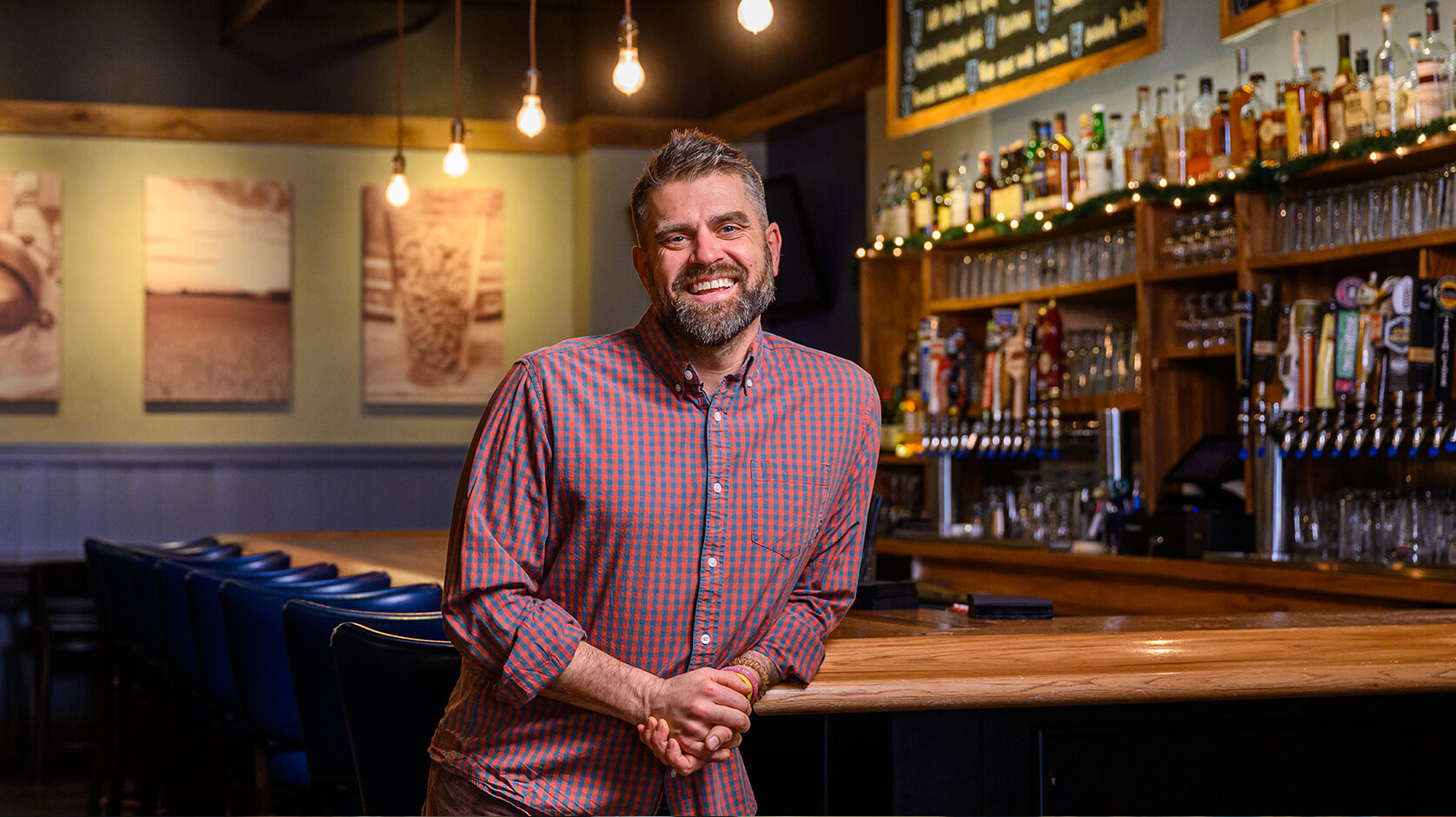

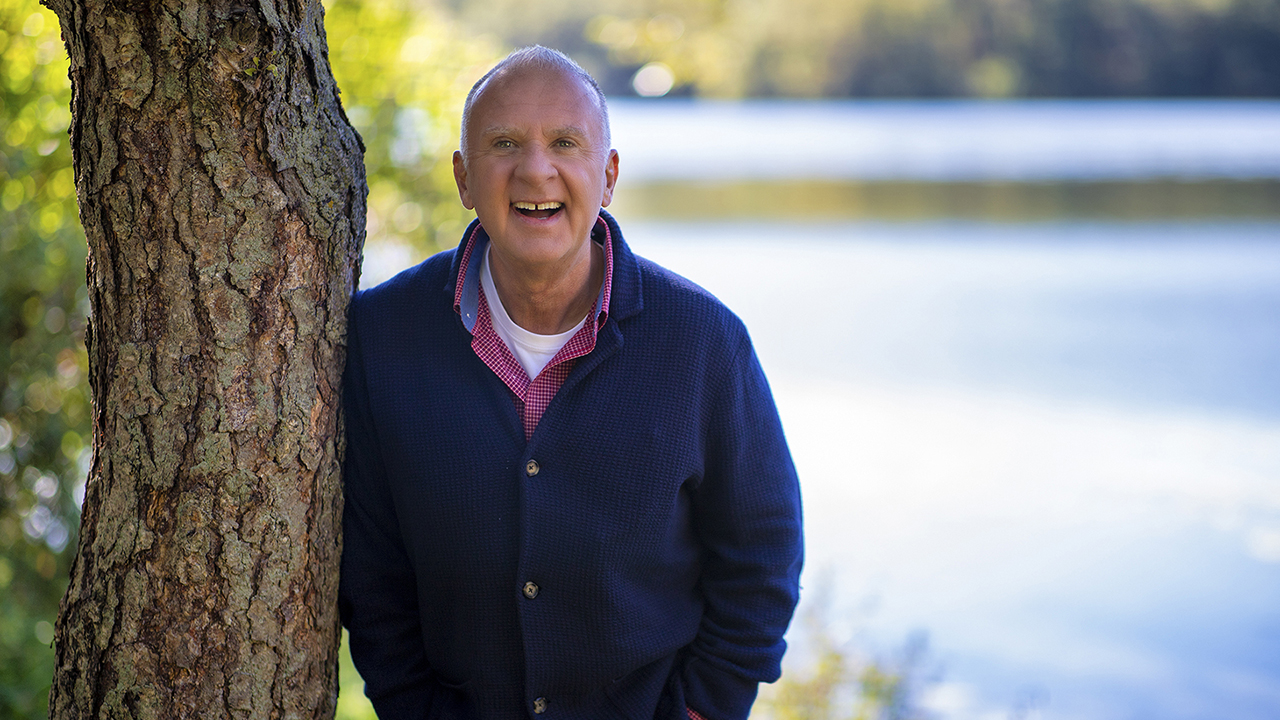



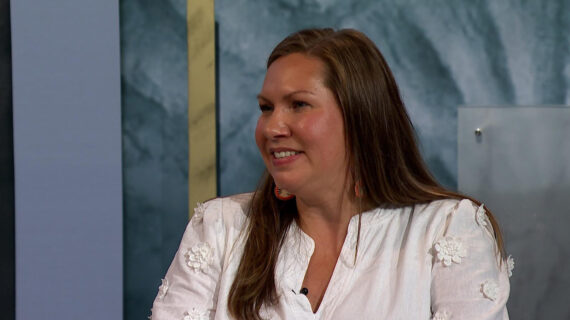
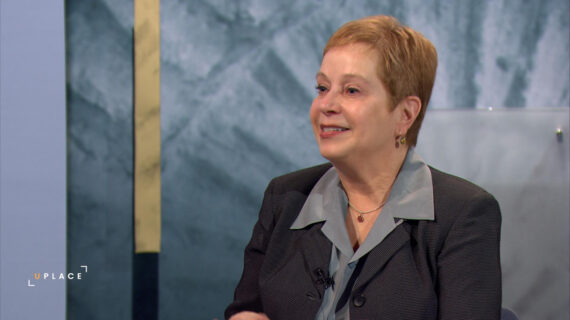

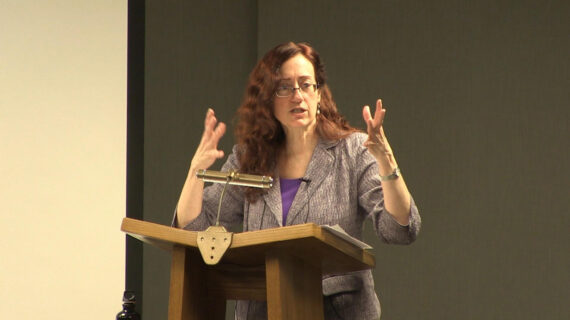
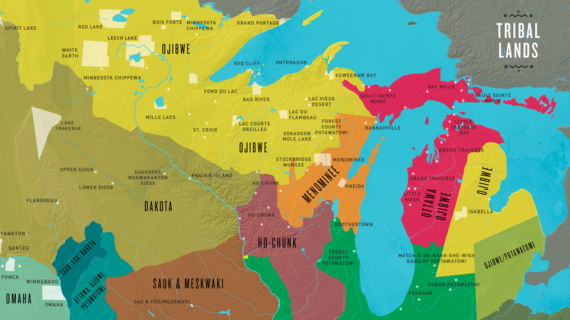
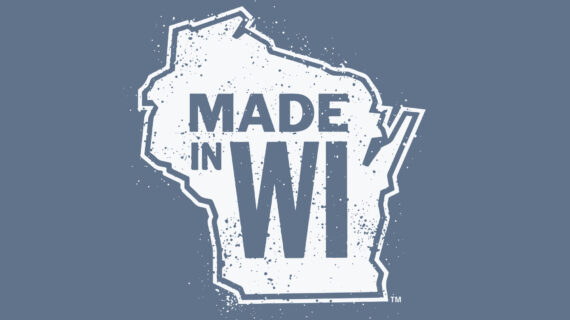

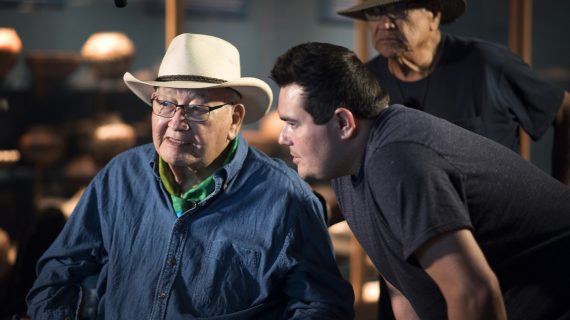





Follow Us